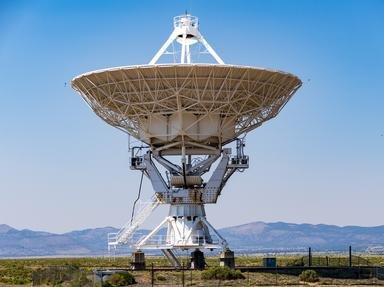Quiz Answer Key and Fun Facts
1. Mu Cephei is a brilliant star in the night and is contained in the Cepheus constellation. It was given a nickname by Sir William Herschel, what was the nickname?
2. Eventually, our galaxy will crash into the Andromeda Galaxy (M31), but we will not have to worry about that happening to us in our lifetime, or many, many, many generations after. Andromeda has a long way to go. But, what will happen when we collide? (Exclude the variables like black holes).
3. We know about the life cycle of a star, but here is a question on the very end of a poor star's life: white dwarfs are both incredibly hot and very bright (in reference to luminosity).
4. Due to odd star movements in the center of all galaxies, astronomers have come up with a solution to provide for the odd "whip-like" movements in star orbits. What is the theory?
5. If you have lived on Earth, then you have seen the sun. But, is the sun the undefeated champ? Is there something that we know of on Earth that is hotter than the surface of the sun?
6. Most of the time when given the term "dying star," we think of a great bang and then a massive vacuum. Not all stars end this way, what is the alternate death course a star can take?
7. Jupiter: big, huge, large, violent. The Great Red Spot is a raging hurricane that has been...raging...for 300 years! But what chemical (or compound) most likely makes it red?
8. Moons are small objects that orbit planets. As you may know, Ganymede is the largest moon, but for now, we are throwing it out of the spotlight and looking at the other extreme. What is the smallest moon of these four options?
9. Edmond Halley is widely known for his discovery about Halley's Comet. His declared that all the comet sightings were one and the same even though there were large time periods between each sighting. He was correct, and got the comet named after him. But, what ironic thing happened when he proposed his ideas?
10. The sun influences so many parts of the daily happenings on Earth; which of the following locations was completely depleted of electricity by a solar flare in 1989?
Source: Author
r1creator
This quiz was reviewed by FunTrivia editor
crisw before going online.
Any errors found in FunTrivia content are routinely corrected through our feedback system.


